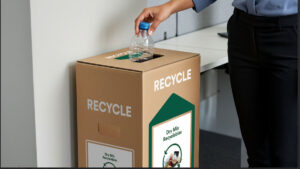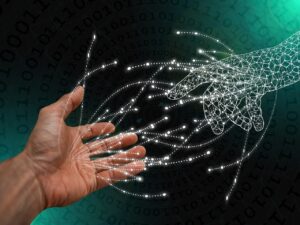How Drone Technology is Helping Businesses Improve Remote Monitoring and Reduce Costs

Drone technology has rapidly evolved over the past decade, and businesses across various industries are reaping the benefits. Once viewed as niche tools for photography and entertainment, drones have now become essential in fields ranging from construction and agriculture to energy and logistics.
Companies are using drones to improve remote monitoring, enhance efficiency, and most importantly, reduce operational costs. Their ability to gather data, inspect hard-to-reach areas, and perform tasks that would otherwise require expensive and time-consuming manual labour has transformed how businesses operate.
This article explores how drones are helping businesses streamline remote monitoring processes, cut costs, and reduce risks, with a special focus on innovative applications like non-destructive testing.
Remote Monitoring: Enhanced Efficiency and Coverage
One of the most prominent uses of drone technology in business is remote monitoring.
Drones equipped with advanced sensors and cameras can provide real-time data and imagery across vast areas, significantly reducing the need for on-site human presence. This capability is invaluable in industries where monitoring infrastructure or land over large distances is crucial.
Infrastructure Inspection
In industries like construction, telecommunications, and energy, infrastructure inspection is critical to ensuring safety, functionality, and compliance.
Traditionally, inspecting large infrastructure like power lines, pipelines, and cell towers would require workers to physically climb, drive, or even fly in manned aircraft to assess conditions. The approach also presents risks to workers.
Drones, however, can fly to these locations, capturing high-resolution images and videos while collecting data from sensors. They can perform the same inspections in a fraction of the time and without putting human lives at risk. The ability to access difficult or dangerous areas quickly and efficiently reduces the need for manual labour, cutting down on both costs and safety concerns.
Agricultural Monitoring
In agriculture, drones are revolutionising the way farms are managed. They can monitor crops, assess soil health, and track irrigation systems with unparalleled accuracy.
Equipped with infrared and thermal imaging cameras, drones provide farmers with detailed data on crop health, allowing them to detect disease, pest infestations, or water stress early.
This precision monitoring helps farmers make data-driven decisions, optimising the use of resources like water and fertiliser. The result? Increased crop yields and reduced costs from wasted resources and manual labour. Drones are becoming indispensable tools for modern farms looking to stay competitive and sustainable.
Reducing Operational Costs
Drones not only enhance monitoring capabilities but also help businesses reduce operating costs in various ways. From minimising the need for large crews to improving resource allocation, the economic benefits of drone technology are obvious.
Labour Savings
One of the most significant ways drones reduce costs is by minimising the need for large teams of workers to perform manual inspections or surveys. For example, in the oil and gas industry, inspecting miles of pipelines typically involves teams of workers travelling across remote areas. With drones, a single operator can conduct these inspections in a much shorter time, reducing the need for extensive manpower.
Additionally, drones can cover areas that would otherwise require expensive equipment, such as scaffolding or helicopters, to access. These savings can be substantial, especially for businesses that conduct frequent inspections or need to monitor infrastructure in remote locations.
Lowering Maintenance and Downtime Costs
Drones are particularly effective at inspecting equipment and infrastructure for signs of wear and tear before they escalate into serious issues. Early detection through routine drone inspections means businesses can carry out preventive maintenance rather than reactive repairs, which are often more costly and result in longer periods of downtime.
For example, drones equipped with thermal imaging can detect overheating components in solar panels or wind turbines, allowing for timely intervention. This proactive approach reduces the likelihood of unexpected breakdowns, saving businesses money on emergency repairs and lost productivity.
Non-Destructive Testing: The Future of Inspections
One of the most innovative applications of drone technology is in Non-Destructive Testing (NDT), a method that allows businesses to inspect materials and structures without causing damage.
Drones equipped with specialised sensors and tools can conduct NDT, allowing for more efficient and less invasive inspections of critical infrastructure.
Applications of NDT in Drones
Industries such as energy, aerospace, and manufacturing heavily rely on NDT to ensure the integrity of their assets. Drones equipped with ultrasonic, electromagnetic, or radiographic sensors can inspect materials for defects, corrosion, or structural weaknesses without needing to dismantle equipment or disrupt operations.
For example, in the energy sector, drones can be used to inspect wind turbine blades for signs of stress or corrosion. Previously, this would have required the turbines to be shut down and workers to scale the towers. Now, drones can perform these inspections while the turbines are still in operation, dramatically reducing downtime and saving costs.
Enhancing Safety and Reducing Risk
Another significant advantage of drone technology is its ability to improve safety and reduce risk, particularly in dangerous or difficult environments.
Minimising Human Exposure to Hazards
In industries like mining, oil and gas, and construction, workers are often exposed to dangerous conditions, whether it’s inspecting high-rise buildings, working in confined spaces, or operating in hazardous environments. Drones can take on these risky tasks, allowing workers to stay safely on the ground while drones perform inspections or assessments.
By reducing the need for workers to enter hazardous environments, businesses can reduce the likelihood of accidents and injuries, which in turn lowers insurance premiums and worker compensation claims.
Environmental Monitoring
Drones are also playing an essential role in environmental monitoring, helping businesses track and assess environmental impacts such as deforestation, oil spills, and air quality.
This real-time monitoring allows for quick intervention in the event of an environmental issue, minimising damage and reducing the costs associated with clean-up or regulatory fines.
Conclusion
Drone technology is transforming the way businesses approach remote monitoring and operational efficiency. From infrastructure inspections and agricultural monitoring to cutting-edge applications like non-destructive testing, drones are helping businesses reduce costs, improve safety, and optimise operations.
As drone technology continues to advance, it will undoubtedly open up even more opportunities for businesses to leverage these tools for enhanced productivity, reduced risk, and greater profitability. For companies looking to stay ahead of the curve, embracing drone technology is no longer just an option—it’s a necessity.
Image by Pixabay







